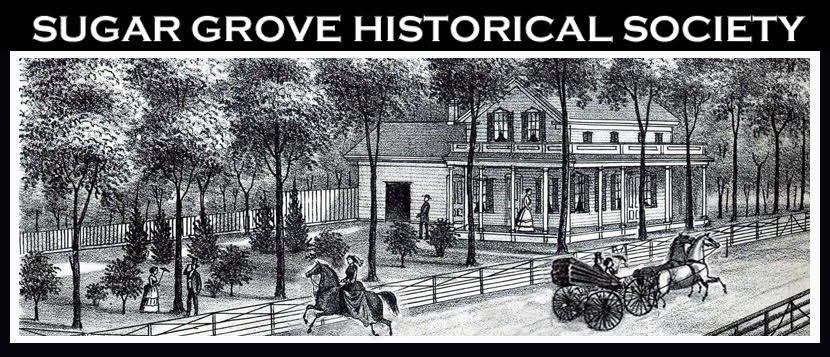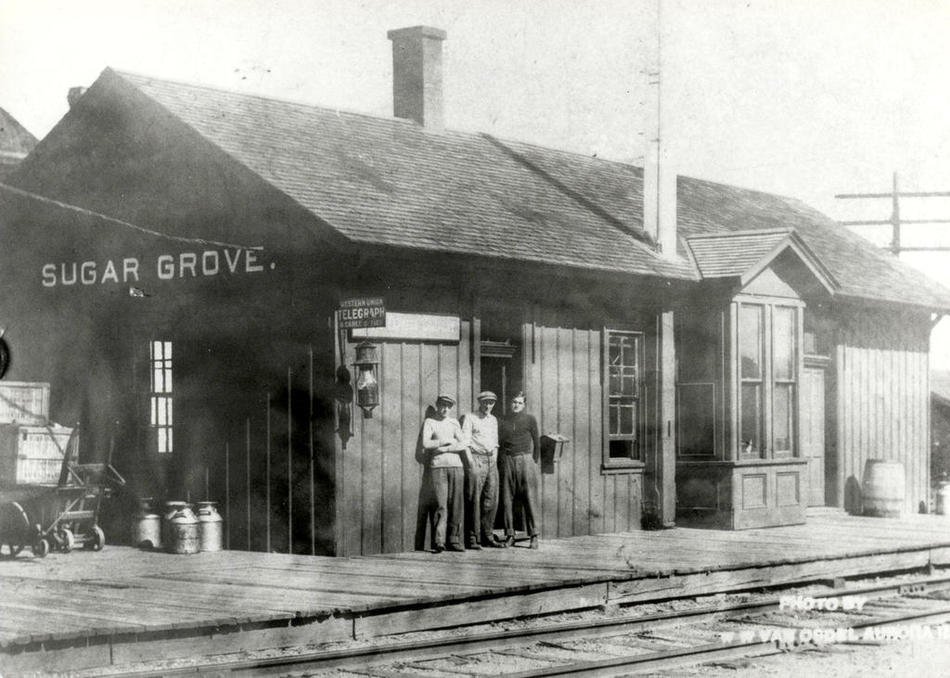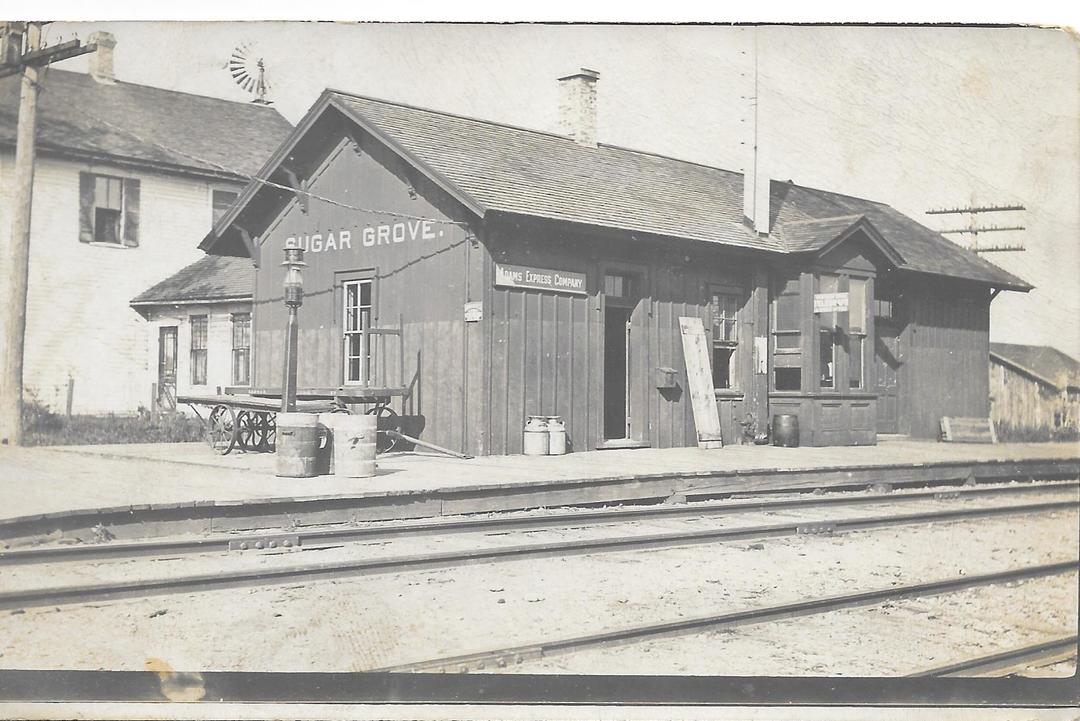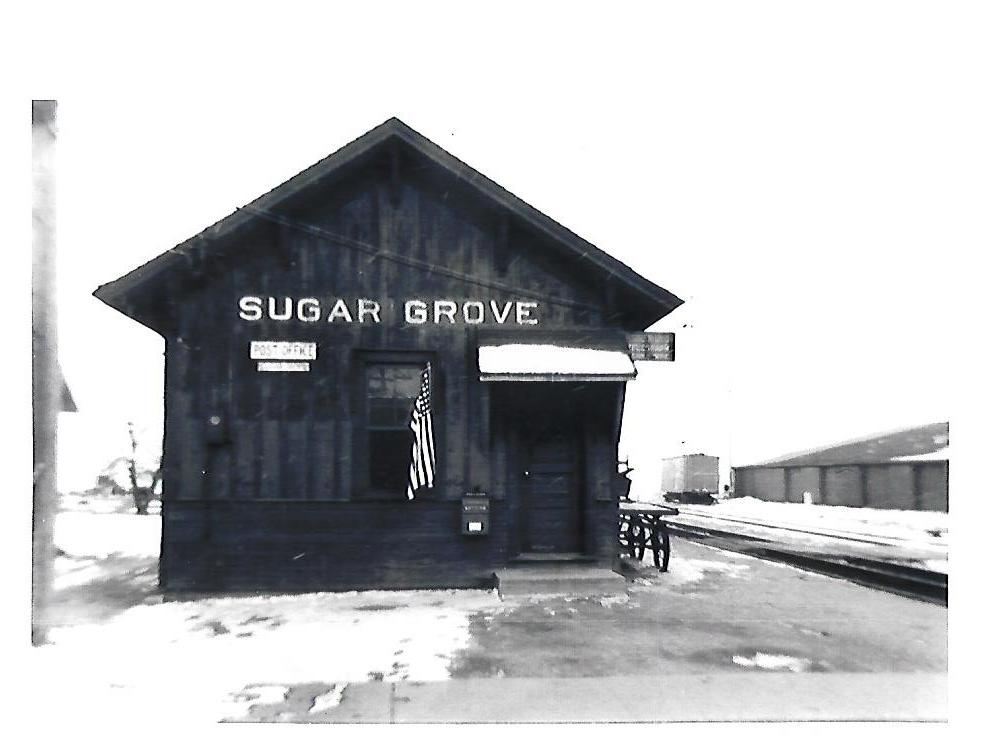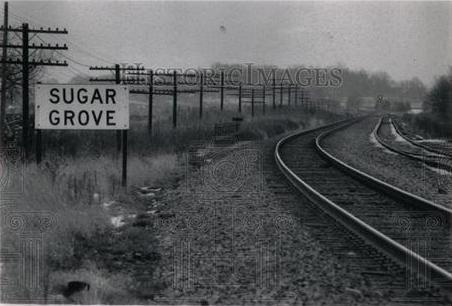Dublin Core
Title
Sugar Grove CB&Q Railroad Depot and Post Office, 1940s
Subject
[no text]
Description
The photo depicts CB&Q Railroad [Chicago, Burlington and Quincy Railroad] depot at Sugar Grove, Illinois, looking eastward in the 1940s. To the right on the opposite side of the rails is the Sugar Grove Grain and Lumber Company lumber shed. An unusual feature of this depot is the US Postal Service renting a portion of the depot for the Sugar Grove Post Office from 1943 to 1959.
When Amtrak took over the passenger business, they discontinued passenger trains on this track. The Sugar Grove depot was removed in the 1970s. The familiar little red building had had the distinction of being the only depot on the Burlington Railroad to serve as both a train station and U.S. Post Office.
For decades, mail was picked up and dropped off in Sugar Grove by way of the Railway Post Office Car, a common part of the passenger trains at one time. The station master would hang the canvas bag of out-going mail from a "crane", which was a hook on an arm suspended from a post along the tracks. In Sugar Grove, this apparatus was located on the railroad right-of-way adjacent to the Hotel West. The mail handler inside the train car used a hook to grab the bag from the post as the train sped through town. The mail was sorted by mail handlers inside the train car, and later dropped off at the appropriate town. In-coming mail was simply thrown from the open door of the Railway Post Office Car, and shortly after picked up by the station master. There were only a few times in Sugar Grove when the bag got beneath the wheels of the speeding train, leaving the mail bag and mail in shreds. Amtrak did away with the mail sorters and since have carried only sorted bags of mail to their destinations.
With the U.S. Post Office occupying a portion of the train depot in Sugar Grove, it was always the center of social gathering as the farmers came to town on their noon break to retrieve their mail and were joined by those who lived in the village. In the winter the farmers would gather around the huge pot belly stove in the center of the waiting area and catch up on the news. In warmer weather, they congregated outside the depot. The sound of the telegraph key could always be hear above their voices. It was situated on the desk which occupied the windowed area towards the tracks, and was the only direct means of communication at that time, between the stations and subsequently the train crews. Flags were used periodically to tell a passenger on a passing train about a message that had been forwarded by way of the telegraph.
Source: "Sin-Qua-Sip: Sugar Grove, A History of Sugar Grove Township, Kane County, Illinois" by Patsy Mighell Paxton.
When Amtrak took over the passenger business, they discontinued passenger trains on this track. The Sugar Grove depot was removed in the 1970s. The familiar little red building had had the distinction of being the only depot on the Burlington Railroad to serve as both a train station and U.S. Post Office.
For decades, mail was picked up and dropped off in Sugar Grove by way of the Railway Post Office Car, a common part of the passenger trains at one time. The station master would hang the canvas bag of out-going mail from a "crane", which was a hook on an arm suspended from a post along the tracks. In Sugar Grove, this apparatus was located on the railroad right-of-way adjacent to the Hotel West. The mail handler inside the train car used a hook to grab the bag from the post as the train sped through town. The mail was sorted by mail handlers inside the train car, and later dropped off at the appropriate town. In-coming mail was simply thrown from the open door of the Railway Post Office Car, and shortly after picked up by the station master. There were only a few times in Sugar Grove when the bag got beneath the wheels of the speeding train, leaving the mail bag and mail in shreds. Amtrak did away with the mail sorters and since have carried only sorted bags of mail to their destinations.
With the U.S. Post Office occupying a portion of the train depot in Sugar Grove, it was always the center of social gathering as the farmers came to town on their noon break to retrieve their mail and were joined by those who lived in the village. In the winter the farmers would gather around the huge pot belly stove in the center of the waiting area and catch up on the news. In warmer weather, they congregated outside the depot. The sound of the telegraph key could always be hear above their voices. It was situated on the desk which occupied the windowed area towards the tracks, and was the only direct means of communication at that time, between the stations and subsequently the train crews. Flags were used periodically to tell a passenger on a passing train about a message that had been forwarded by way of the telegraph.
Source: "Sin-Qua-Sip: Sugar Grove, A History of Sugar Grove Township, Kane County, Illinois" by Patsy Mighell Paxton.
Identifier
[no text]
Date
[no text]
Creator
[no text]
Language
[no text]
Rights
[no text]
Format
[no text]
Relation
[no text]
Source
[no text]
Publisher
[no text]
Contributor
[no text]
Type
[no text]
Coverage
[no text]
